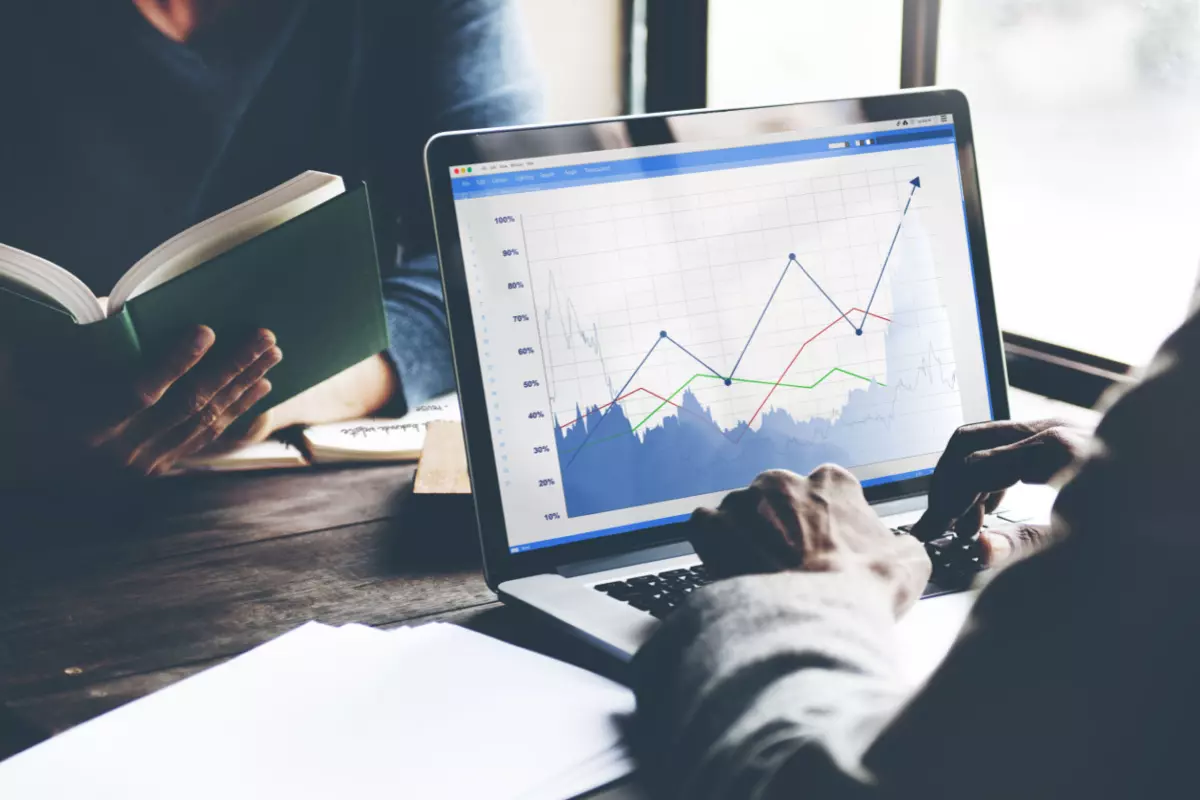Difference Between Prediction and Forecast
With the advent of modern technologies, businesses have come to rely on forecasting and prediction as key tools to guide their decision-making processes.
These terms are often used interchangeably, but they have distinct differences that are important to understand accurate planning and strategic decision-making.
Prediction involves estimating an outcome with a high level of certainty, usually based on historical data and statistical modeling.
On the other hand, a forecast involves projecting future developments but with a certain level of uncertainty due to external factors that may impact the outcome.
This article will explore the intriguing world of forecasting and prediction, their differences, the tools used in business forecasting, and the role of artificial intelligence (AI).
Forecasting vs. Prediction
Forecasting and prediction are methods used to estimate future outcomes but differ in several key aspects. Forecasting relies heavily on historical data and statistical methods to make informed guesses about future trends. Conversely, prediction involves making educated guesses or projections without depending on these factors.
However, both approaches share the biggest assumption in predictive modeling: that past trends and patterns will continue in the future.
While future outcomes can be predicted and forecasted based on past data, this may not always be true. As such, businesses should continuously evaluate and update their forecasting and prediction processes to adapt to changing market dynamics and technological advancements.
That said, here are some of the main differences between prediction and forecasting:
| Forecasting | Predictions | |
| Definition | Forecasting is the process of estimating future events or trends based on historical data and statistical methods. It involves analyzing patterns and trends in past data to make informed guesses about future outcomes. | Prediction involves making an educated guess or projection about a specific outcome without relying on historical data or statistical methods. |
| Timeframe | Forecasting typically focuses on predicting outcomes over a longer time frame, often involving trends and patterns that occur over months, years, or even decades. | Predictions can be more short-term and immediate, often used to estimate outcomes in the near future, up to a year. |
| Assumptions | Forecasting relies heavily on historical data and statistical methods, assuming that past trends and patterns will continue in the future. | Predictions may involve assumptions based on expert opinions, intuition, or subjective judgment, without necessarily relying on historical data. |
| Accuracy | Forecasting aims to provide a more accurate estimate of future outcomes. | Predictions can be less accurate due to their reliance on subjective judgment and assumptions. |
| Purpose | Forecasting is used for strategic planning, budgeting, resource allocation, and risk management. It helps companies make informed decisions based on historical data and statistical projections. | Predictions may be used in weather forecasting, sports predictions, or market predictions, where subjective opinions or assumptions play a role. |
Forecasting Tools for Business
Forecasting is crucial to business decision-making, as it helps companies plan their resources, manage inventory, and make strategic decisions. Several forecasting tools are available to businesses to aid them in making accurate and informed forecasts.
Some popular forecasting tools include the following:
Data Visualization Tools
Data visualization tools like dashboards and charts can help businesses visually analyze historical data and identify patterns and trends, leading to more accurate forecasts.
Suppose a retail business wants to forecast its sales for the upcoming holiday season. They could use a data visualization tool like Tableau to create a dashboard that displays their historical sales data. By visualizing this data, they may notice that sales tend to spike during certain weeks leading up to the holidays.
They can then use this information to make an informed forecast for the upcoming holiday season, considering the historical sales patterns they identified through data visualization.
Demand Planning Software
Specialized demand planning software, such as Demand Management Systems (DMS) or Sales and Operations Planning (S&OP) tools, can aid businesses in forecasting demand, optimizing inventory levels, and improving supply chain management.
For example, if a retail company wants to forecast demand for a particular product in the upcoming quarter. The company could use a demand planning software tool like SAP Integrated Business Planning to analyze historical sales data, current market trends, and other relevant factors.
Based on this analysis, the software could forecast expected demand, considering seasonality, trends, and other factors. The company could then use this forecast to optimize inventory levels, determine production schedules, and make other supply chain decisions.
For instance, if the software forecasted high demand for the product in question, the company could order additional inventory from suppliers, adjust production schedules to ensure adequate supply, and plan promotional activities to help drive sales.
Conversely, if the software forecasted low demand, the company could reduce inventory levels, delay production, or adjust pricing strategies to clear out excess inventory.
Scenario Analysis
Scenario analysis involves creating different scenarios based on varying assumptions and evaluating the potential outcomes. This can help businesses assess the potential impact of different techniques on their forecasted data and make informed decisions accordingly.
Let’s say a business is considering expanding into a new market but is unsure of the potential demand for its product. They can use scenario analysis by creating different scenarios with varying assumptions, such as high demand, moderate demand, and low demand, and evaluating the potential outcomes for each scenario. Based on the analysis, they can decide whether or not to expand and what resources to allocate towards the expansion.
Statistical Forecasting Methods
These methods involve using statistical techniques, like time series analysis, regression analysis, and exponential smoothing, to analyze historical data and make forecasts based on patterns and trends.
- Time Series Analysis: This method involves analyzing data over time to identify patterns and trends. Time series analysis helps forecast future values based on historical trends. For example, a retailer might use time series analysis to forecast sales for a specific product during a particular season.
- Regression Analysis: This method involves identifying relationships between variables where one variable is dependent on the other. Regression analysis helps make predictions based on the relationship between variables. For example, a marketing team might use regression analysis to predict how changes in advertising spend will impact sales.
- Exponential Smoothing: This method involves assigning weights to historical data to give more importance to recent data. Exponential smoothing helps forecast data with a trend or seasonality. For example, a transportation company might use exponential smoothing to forecast demand for a particular route during peak travel season.
Sales Forecasting Methods

Sales forecasting tools are designed to help businesses predict future sales trends and patterns. These tools may include features such as demand forecasting, market analysis, and customer segmentation to provide businesses with insights into future sales performance.
- Demand Forecasting: This process estimates the demand for a particular product or service. It considers factors like market trends, consumer behavior, and historical sales data to predict future demand. For example, a retailer may use demand forecasting to predict how many units of a particular product they should stock based on past sales and current market trends.
- Market Analysis: This process involves studying the market in which a business operates to understand consumer needs, competitor activity, and other factors that could impact sales. This method may include gathering data on consumer demographics, purchasing behavior, and market trends. For example, a business may conduct a market analysis to determine the potential demand for a new product in a particular market.
- Customer Segmentation: This process involves dividing customers into groups based on shared characteristics, such as demographics, purchasing behavior, or interests. This method can help businesses tailor their sales and marketing efforts to specific customer groups, which can improve their forecasting accuracy. For example, an e-commerce company may use customer segmentation to target particular groups of customers with personalized marketing campaigns.
Algorithmic Forecasting
Algorithmic forecasting uses advanced mathematical algorithms and machine learning techniques to analyze large amounts of data and make accurate predictions. These tools can handle complex data sets and identify patterns that may not be readily visible through traditional statistical methods.
Here are some examples of algorithmic forecasting:
- Time Series Forecasting Using ARIMA Models: This technique is commonly used in finance and economics to forecast stock prices, exchange rates, and other time series data.
- Random Forest: A machine learning algorithm that can be used for regression and classification tasks. It is often used to predict customer behavior and target marketing campaigns.
- Gradient Boosting: Another machine learning algorithm used for regression and classification tasks. It is commonly used in e-commerce to predict customer churn and recommend products to customers.
- Neural Networks: A class of machine learning algorithms that can be used for both regression and classification tasks. They are used in various applications, including image recognition, speech recognition, and natural language processing. In business, they can forecast sales, customer behavior, and more.
Financial Forecasting Tools
Financial forecasting tools focus on predicting economic outcomes, such as cash flow, revenue, and profitability. These tools may use financial ratios, historical economic data, and other metrics to give businesses insights into their future performance.
Here are some examples of financial forecasting tools:
- QuickBooks: This accounting software includes forecasting capabilities to help businesses predict their future financial performance. QuickBooks can help businesses forecast sales, expenses, and cash flow.
- Prophix: This financial planning and analysis software can create economic forecasts, budgets, and reports. Prophix includes what-if analysis, scenario modeling, and variance reporting features.
- Oracle Hyperion: This enterprise performance management software includes financial forecasting capabilities to help businesses forecast revenue, expenses, and profitability. Oracle Hyperion also includes features such as predictive analytics and scenario modeling.
- Adaptive Insights: This cloud-based financial planning and analysis software includes forecasting capabilities to help businesses predict their future financial performance. Adaptive Insights can be used for financial forecasting, budgeting, and reporting.
- Forecast 5: This financial forecasting software can create financial forecasts for cash flow, revenue, and profitability. Forecast 5 includes automated forecasting, what-if analysis, and scenario modeling.
Judgmental Forecasting
This involves incorporating expert analysis into the forecasting process. This can be done through techniques such as the Delphi method, where experts provide input, and their views are combined to arrive at a forecast. However, judgmental forecasting can be influenced by biases or personal opinions, so it is often used with other methods to improve forecasting accuracy.
The Delphi method is a structured approach to judgmental forecasting that involves gathering and synthesizing expert opinions to arrive at a consensus forecast. The method typically involves several rounds of anonymous surveys or questionnaires, with the results from each round being used to refine the forecast until a consensus is reached.
For example, suppose a company wants to forecast sales for a new product line. They might use the Delphi method by assembling a panel of experts in the field and asking them to provide their opinions on factors such as market size, consumer trends, and competition.
The experts would complete a series of questionnaires, and the responses would be collected and analyzed to arrive at a forecast for sales. This process may be repeated until a consensus is reached, at which point the forecast is finalized.
How AI Makes Forecasting Better
Artificial intelligence (AI) has revolutionized the field of forecasting, making it more accurate and efficient. Here are some ways in which AI is enhancing forecasting.
AI-Powered Forecasting Software
Advanced forecasting software powered by AI can rapidly and accurately analyze large datasets, allowing businesses to make data-driven decisions. These tools can identify patterns and trends in data that might be challenging to uncover using traditional methods.

An example of AI-powered forecasting software is Forecast Pro. It uses machine learning algorithms to analyze large data sets and provide accurate forecasts for retail, manufacturing, and healthcare businesses.
Forecasting and Predictive Analytics
AI-powered predictive analytics tools can analyze diverse data sources, including structured and unstructured data, to provide valuable insights on future outcomes. By identifying hidden patterns and correlations, these tools can offer businesses a comprehensive view of market trends, enabling them to make more informed decisions.
IBM Watson Analytics is an example of a tool that provides forecasting and predictive analytics. This tool can analyze diverse data sources, including structured and unstructured data, to provide businesses with insights into future outcomes. Companies can use it in various industries, including finance, healthcare, and retail.
Machine Learning
Machine learning algorithms can learn from new data and continuously improve their accuracy over time. These algorithms can identify patterns and trends that may not be easily recognizable through traditional forecasting methods. Machine learning can be applied to various industries like healthcare, finance, and retail.
For example, it can help healthcare providers forecast patient demand, help retailers forecast inventory requirements, and help finance experts analyze market trends.
Amazon’s demand forecasting system is an example of machine learning in forecasting. It uses machine learning algorithms to analyze historical data and provide demand forecasts for products sold on the Amazon marketplace.
Automation
AI-powered forecasting tools can automate repetitive tasks and processes, such as data collection, cleaning, and analysis, saving time and resources for businesses. Also, automation frees employees to focus on strategic decision-making rather than spending time on manual forecasting tasks.
An example of an AI-powered forecasting tool that automates repetitive tasks is Anaplan. It can automate data collection, cleaning, and analysis for businesses in finance, supply chain, and sales.
Real-Time Updates
AI-powered forecasting tools can continuously update forecasts in real-time as new data becomes available. This enables businesses to adapt their strategies and plans based on the most up-to-date information, leading to more accurate and agile decision-making. For example, transportation companies can utilize real-time traffic data to optimize their delivery schedules.
Another example is Google Analytics – a tool that provides real-time updates. It can continuously update website traffic and performance data in real-time, allowing businesses to adjust their marketing strategies.
Advanced Algorithms
AI can utilize advanced algorithms, such as machine learning algorithms, deep learning, and natural language processing, to identify patterns, correlations, and trends in data that may not be easily recognizable through traditional methods.
Advanced algorithms can be applied to various industries, such as manufacturing, agriculture, and energy. For instance, manufacturers can use predictive maintenance models to forecast equipment failures, and energy providers can forecast energy demand using weather and consumption data.
Enhanced Accuracy and Precision
AI-powered forecasting models can continuously learn and improve from new data, enhancing accuracy and precision. This reduces errors and biases in human judgment, leading to more reliable forecasts. This improvement in accuracy can lead to better decisions and planning for businesses by predicting future product demand.
SAS Forecasting is an example of an AI-powered forecasting model that enhances accuracy and precision. It can continuously learn and improve from new data, leading to more reliable forecasts for businesses in various industries.
Scalability and Adaptability
AI-powered forecasting models can handle large datasets and adapt to changing business dynamics, market trends, and consumer behavior. This allows for more agile and flexible forecasting, especially in fast-paced business environments.
For example, in the hospitality industry, AI-powered demand forecasting can help businesses adjust their pricing strategies to maximize revenue based on changes in demand.
Microsoft Azure Machine Learning is an example of an AI-powered forecasting model that can handle large datasets and adapt to changing business dynamics. As a result, businesses can use it in various industries, including finance, healthcare, and manufacturing.
Key Takeaways
- Forecasting uses historical data and statistical methods to estimate future outcomes.
- Predictions are based on subjective judgment or assumptions about future events.
- Forecasting involves estimating future events or trends based on historical and statistical data.
- Predictions make educated guesses or projections without relying on historical data or statistical methods.
- Forecasting predicts outcomes over a longer time frame, often over months, years, or even decades.
- Predictions are short-term and immediate, often in the near future, up to a year.
- Forecasting relies on historical data and statistical methods, assuming that past trends and patterns will continue in the future.
- Predictions make assumptions based on expert opinions, intuition, or subjective judgment.
- Forecasting provides a more accurate estimate of future outcomes
- Predictions are less accurate due to their reliance on subjective judgment and assumptions.
- Forecasting tools, such as statistical methods, time series analysis, and simulation, can
Sum Up
Understanding the difference between prediction and forecast is necessary for accurate planning and decision-making in the ever-changing business environment.
While forecasting relies on historical data and statistical methods, prediction involves subjective judgment and assumptions.
With the advent of AI and advanced technologies, businesses now have powerful tools at their disposal to enhance their forecasting capabilities.
However, businesses need to recognize the assumptions underlying predictive modeling and continually update and refine forecasting processes to ensure accuracy. Doing so enables them to make informed decisions and stay competitive in a rapidly changing business landscape.
Try our real-time predictive modeling engine and create your first custom model in five minutes – no coding necessary!
- Fully operational AI with automated model building and deployment
- Data preprocessing and analysis tools
- Custom modeling solutions
- Actionable analytics
- A personalized approach to real-time decision making
Table of Contents
- Forecasting vs. Prediction
- Forecasting Tools for Business
- Data Visualization Tools
- Demand Planning Software
- Scenario Analysis
- Statistical Forecasting Methods
- Sales Forecasting Methods
- Algorithmic Forecasting
- Financial Forecasting Tools
- Judgmental Forecasting
- How AI Makes Forecasting Better
- AI-Powered Forecasting Software
- Forecasting and Predictive Analytics
- Machine Learning
- Automation
- Real-Time Updates
- Advanced Algorithms
- Enhanced Accuracy and Precision
- Scalability and Adaptability
- Key Takeaways
- Sum Up



